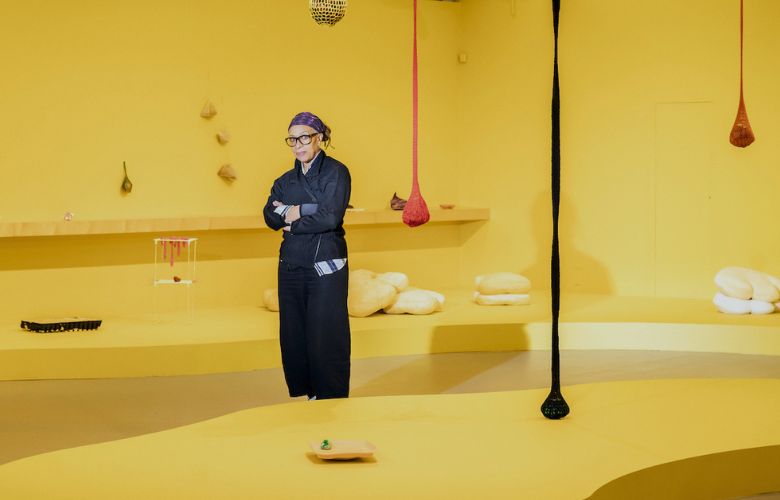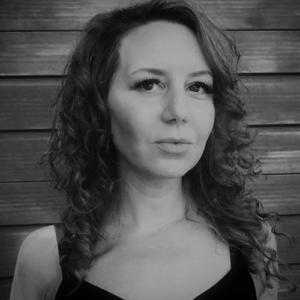
Veronica Ryan is the winner of the 2022 Turner Prize. The sculptor is best known for her London installation that memorialized the Windrush generation. Ryan celebrated the momentous win at a ceremony held at the Tate in Liverpool, taking home £25,000 and the title of the award’s oldest winner to date, aged 66.
Several of Veronica Ryan’s award-winning marble and bronze sculptures first debuted in Hackney, East London last year and depicted Caribbean fruit and vegetables: soursop, breadfruit and a custard apple. The pieces are a homage to the Windrush generation. Speaking about the art to Hackney Council, Ryan said:
“The movement of fruit and vegetables across the globe historically exemplifies the way people have been part of that movement. Many fruit and vegetables have their origins in Asia, and Africa. The perception of origins and belonging to specific places is an extended part of the conversation. The sculptures will provide people with a sense of visibility, connectedness, belonging, and an ownership of history that is not taught in school.”

Following the aftermath of World War II, Britain invited Caribbean citizens in colonized countries to move to the UK with the promise of jobs. The first ship to arrive in Essex with 500 passengers in 1948 was called the Empire Windrush. Many more people arrived over the years, with the period between 1948 – 1971 and are referred to as the ‘Windrush generation’.
The first failing for people of the Windrush generation was the hostile reception they received – many faced outright racism, discrimination, and faced difficulties finding homes and jobs in the UK.
The second plight faced happened much later, with the Windrush scandal still impacting many today. The arrivals who came to the UK as children were wrongly told that they are illegal citizens. In 1971, the decision was made to allow them to stay, however records were not kept properly, and not all citizens were in possession of UK passports or formal documents.
When immigration laws changed in 2012, the UK announced that formal documents were necessary in order to remain as a citizen, as well as accessing normal support in Britain. Because of this, many from the Windrush generation were deported, or sent to immigration detention centres wrongly, and without hesitation.
It wasn’t until 2018 that a review finally announced the failings of the UK government, however just 18 people in the Windrush generation who had been wrongly deported received a formal apology following a review of 11,800 cases.
Veronica Ryan was born in Plymouth, Montserrat in 1956. She studied at The School of Oriental and African Studies, London; The Slade School of Fine Art, University College, London; Bath Academy of Art, Corsham Court, UK; and St. Albans College of Art and Design.
Ryan’s practice addresses issues of history, belonging and identity, featuring handcrafted works that reference her Caribbean heritage but also address current environmental, psychological and social issues.
Uncovering psychological associations and engaging with ‘residues, traces, memory, deposits,’ her work reflects the natural world with sculptural objects and assemblages of found materials. Her unique sculptural works allude to organic shapes, yet also relate to the historical networks of commercial exchange, including humans and produce, alongside the cycles of death and rebirth, environmental breakdown, intergenerational exchange, and collective trauma. Ryan lives between New York and Bristol.
Seeds, fruit, vegetable trays, volcanic ash, teabags, dried flowers and cushions. These are just some of the objects that British artist Veronica Ryan uses in her colourful sculptural works, based on organic forms but which allude to complex historical networks of commercial exchange.
In this film, Veronica Ryan takes us inside the fabrication studio at Bristol’s Spike Island where a lot of her artworks are made. She also takes us shopping down Ridley Road Market in East London, just round the corner from her public sculptures honouring the Windrush Generation.
Veronica’s transcript explains the background to her work:
“The project in Hackney around Windrush I wanted it to be a celebratory work. My parents came to England in the 50s, so I have early memories of going to Ridley Road Market mostly because my mother always met her friends.
It’s interesting that I’ve chosen those particular fruit and veg because they’re what my mum, what she ate when she was pregnant with me.
I like the idea that I might have internalised these particular soursop, custard apple and breadfruit.
I like the idea that you know there’s this whole side of nurture and healing and mother and daughter relationships and intergenerational information being passed on.
Every time I’m in Hackney I’m always fascinated because children just sit on them and they climb on them and I really like that that there’s a serious conversation around the work but then there’s this possibility for play and that children are learning about structures and sculpture and about foods from the place that their parents come from, so they connect them on lots of different levels.”
See the Turner Prize 2022 for free at Tate Liverpool, 20 October 2022 – 19 March 2023.
Accessibility At The Smith Center Series: Part One
James “Fitz” FitzSimmons Interview: The Boys In The Band On Netflix


Michelle is a musician and composer from the UK. She has performed across the UK and Europe and is passionate about arts education and opportunities for women and girls.
Read Full Profile© 2021 TheatreArtLife. All rights reserved.

Thank you so much for reading, but you have now reached your free article limit for this month.
Our contributors are currently writing more articles for you to enjoy.
To keep reading, all you have to do is become a subscriber and then you can read unlimited articles anytime.
Your investment will help us continue to ignite connections across the globe in live entertainment and build this community for industry professionals.